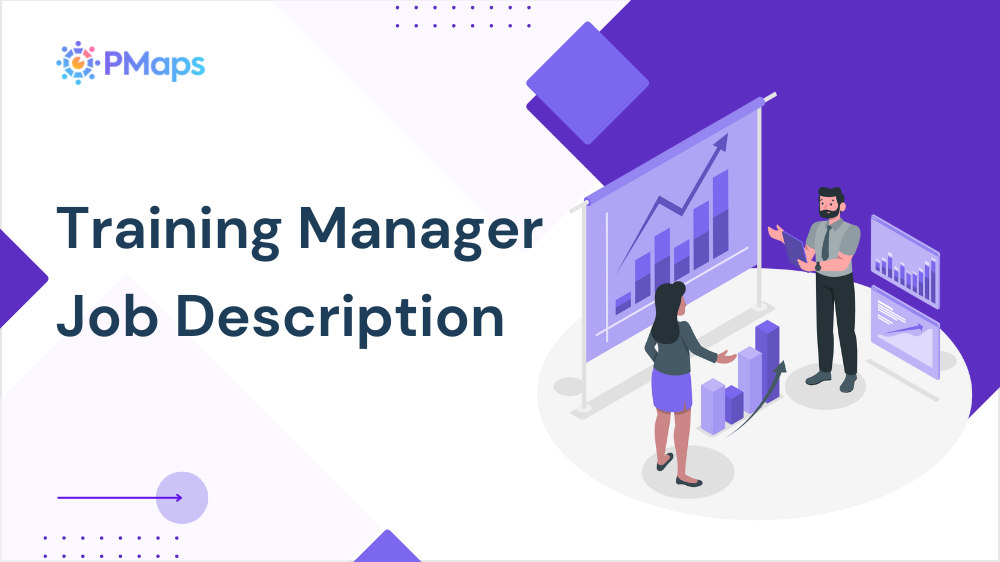
A Training Manager plays a key role in equipping employees with skills that drive business performance. This role focuses on planning, developing, and managing learning programs tailored to organizational needs. Unlike general HR roles, the training manager job profile is specialized in capability-building, performance improvement, and continuous learning.
This training and development manager job description targets professionals who lead structured learning frameworks, optimize content delivery, and ensure that training efforts deliver measurable outcomes. From onboarding to leadership development, the training manager job role is crucial to workforce growth and retention.
Training Manager Roles and Responsibilities
The training manager job role focuses on identifying skill gaps, designing effective learning programs, and measuring training outcomes. This function ensures employee development aligns with business goals and supports long-term workforce capability.
Key responsibilities include:
- Identify and assess training needs across teams and functions
- Design and deliver effective learning programs (in-person, virtual, blended)
- Lead onboarding, upskilling, and compliance training sessions
- Administer and optimize LMS platforms and learning tools
- Measure training impact using KPIs and feedback analytics
- Collaborate with managers and SMEs to align content with role expectations
- Support leadership and soft-skill development initiatives
- Ensure consistent learning standards across departments
Additional Resource- 89% of L&D pros say proactively building skills is key to future-readiness (LinkedIn). Use the Training Manager Test to identify skill-builders who drive workforce growth.
Objective of the Training Manager Job Role
The training manager job role exists to build a performance-ready workforce by aligning employee development with business goals. This role ensures that learning is continuous, relevant, and measurable—empowering teams to grow, adapt, and succeed. Key objectives include:
- Translate business needs into structured training outcomes
- Build scalable learning paths across career levels
- Improve onboarding and reduce ramp-up time
- Support leadership and behavioral capability development
- Deliver measurable ROI through data-driven learning evaluation
Qualification and Skill Requirements for Training Manager
This training manager job profile calls for a learning leader who blends strategy with execution. The ideal candidate brings experience in training design, facilitation, and tech-enabled learning—alongside strong analytical and communication skills. Required qualifications for the role is as follows:
- Bachelor’s or Master’s in HR, Education, Psychology, or related field
- Minimum 5 years of experience in corporate training or L&D
- Hands-on expertise with LMS platforms and learning tools
- Proven skills in instructional design and program delivery
- Strong analytical mindset to track and improve training ROI
- Ability to collaborate across functions and influence stakeholders
- Certifications like ATD, CPLP, or SHRM-SCP (preferred)
Pro Tip: Structured interviews are 2x more effective at predicting job performance than unstructured ones (Source: Schmidt & Hunter, Psychological Bulletin). Use our Training Manager Interview Question Bank to hire with confidence and consistency.
Perks and Benefits of the Training Manager Role
This training manager job profile offers more than responsibility—it provides the tools, environment, and culture to lead learning with impact. The role supports personal growth while empowering others to grow through you. Key benefits include:
- Competitive salary with performance-based bonuses
- Access to premium learning tools and certifications
- Flexible work options (remote/hybrid)
- Health insurance and wellness support
- Leadership development and cross-functional exposure
- Inclusive, innovation-focused team culture
Tips for Employers to Craft an Effective Training Manager
A high-impact Training Manager job description should do more than outline duties—it must position the role as a strategic driver of workforce capability and business performance. With the rapid evolution of learning technologies and organizational needs, here are key tips to help you attract qualified, forward-thinking candidates:
- Lead with strategy, not tasks: Frame the role as a business enabler—focus on learning outcomes, employee development, and performance improvement.
- Use job-relevant titles and keywords: Include terms like Learning and Development Manager, L&D Specialist, or Capability Development Lead for search optimization.
- Specify the learning environment: Mention your learning culture, preferred delivery models (in-person, virtual, blended), and scope (local/global teams).
- Showcase tech fluency expectations: List platforms or tools such as LMS, LXP, SCORM, or digital assessment tools to attract tech-savvy candidates.
- Clarify measurable objectives: Mention expected KPIs like training completion rates, knowledge retention scores, or performance impact to signal accountability.



